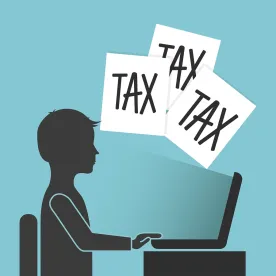Businesses, employees, and other taxpayers are incurring new and often significant expenses as they adapt and respond to the changes brought on by the COVID-19 pandemic. Several tax provisions may help to mitigate the impact of those costs, including new provisions enacted as part of the Coronavirus Aid, Relief and Economic Security (CARES) Act as well as certain previously existing provisions of the Internal Revenue Code (“Code”).
Qualified Disaster Relief Payments Under I.R.C. Section 139
President Trump’s national emergency declaration on March 13, 2020 in connection with the COVID-19 pandemic triggered the provisions of Section 139 of the Code. Under Section 139, the amount of “qualified disaster relief payments” paid to or for the benefit of any individual, including by an employer to or for the benefit of its employees, is excluded from the gross income (and therefore is not subject to federal income or employment taxes, though such amount may be subject to state income tax).
Qualified disaster relief payments in this case include amounts paid for an individual’s “reasonable and necessary personal, family, medical, living or funeral expenses incurred as a result” of the COVID-19 pandemic, but only to the extent the individual’s expenses are not compensated for by insurance or other means. In light of the widespread shift to teleworking and the extensive hardship that many employees are facing under COVID-19, many tax practitioners believe that expenses such as home office supplies, materials and equipment (including stationery, laptop computers, printers, etc.), dependent care, unreimbursed medical expenses, funeral expenses, and certain living expenses (such as cleaning products and sanitizers), should constitute qualified expenses.
There is no limitation on the amount of qualified disaster relief payments that may be made, but the amount must be reasonable and necessary for the qualified expenses. The gross income exclusion provided under Code Section 139 does not apply, however, to payments that are in the nature of income replacement, e.g. payments for lost wages. Additionally, the recipient of qualified disaster relief payments is not permitted to take any deductions for the related expenses.
The legislative history of Section 139 provides that the deductibility of qualified disaster relief payments for the payor should be assessed as if Section 139 had not applied. Therefore, while there is no clear guidance on the issue, many tax practitioners believe that qualified disaster relief payments made by employers to or for the benefit of employees should be deductible because, if Section 139 had not applied, the payments would have been deductible to the employer either as wages or other business expenses.
Note that the recipient of the qualified disaster relief payments is not required to maintain records of the payments it receives or of the expenses to which the qualified disaster relief payments relate. To substantiate the deduction, however, employers should retain records of the qualified disaster relief payments. Additionally, it is advisable for employers to have a simple written plan or policy in place establishing procedures and parameters to ensure that the payments are made for qualified expenses.
CARES Act
Use of Net Operating Losses
Under the CARES Act, a net operating loss (“NOL”) arising in taxable years beginning after December 31, 2017 and before January 1, 2021 (i.e., 2018, 2019, 2020 calendar years) may now be carried back to each of the five taxable years preceding the taxable year in which the NOL arose (and may still be carried forward indefinitely). Additionally, the use of NOLs in taxable years beginning before January 1, 2021 is not limited to 80% of the taxable income of that taxable year. As a result, NOLs may be used to offset 100% of taxable income in those taxable years.
An NOL arising in taxable years beginning after December 31, 2017 and before January 1, 2021 will automatically be carried back to the five taxable years preceding the taxable year in which the NOL arose unless a timely election is made to waive the entire carryback. Each election is irrevocable and applies only to a particular taxable year’s NOL. If an election to waive the carryback for a particular taxable year’s NOL is not made, that NOL will be carried back to the earliest year within the carryback period where there is taxable income.
Special carryback rules apply to certain taxpayers, such as REITs and life insurance companies. Additionally, in some instances, taxpayers may be better off not carrying back NOLs to prior years, so care should be taken before accepting such a carryback.
Suspension of Loss Limitation
The CARES Act suspended the loss limitation rules under Code Section 461(l), which limits the amount of “net business loss” an individual may apply in a year to $250,000 (and $500,000 for taxpayers filing jointly). Pursuant to Section 461(l), any loss that was so disallowed was converted into a NOL and was subject to the restrictive NOL rules. The CARES Act temporarily suspends Code Section 461(l) for 2020 and retroactively to January 1, 2018. Therefore, taxpayers subject to Section 461(l) in 2018 and 2019 should consider filing refund claims.
The CARES Act also includes several technical corrections to Section 461(l). The Section 461(l) calculation now excludes items which are attributable to the trade or business of performing services as an employee.
Qualified Improvement Property
Qualified improvement property is any improvement to the interior of an existing building that is nonresidential real property. While qualified improvement property was intended to be property to which a 15-year recovery period applies, and eligible for bonus depreciation, the Tax Cuts and Jobs Act enacted at the end of 2017 (“TCJA”) failed to include qualified improvement property as 15-year property, and such property was not eligible for bonus depreciation. Thus, costs associated with placing qualified improvement property in service were subject to a 39-year recovery period. Fortunately, the CARES Act remedied this problem by making qualified improvement property 15-year property for purposes of depreciation and makes such property eligible for 100% bonus depreciation.
This change is retroactive. As a result, businesses that made improvements to their buildings may now amend tax returns to claim the missed 2018 (and 2019 if such tax returns have already been filed) bonus depreciation.
Increase in Business Interest Expense Limitation
The CARES Act modified Code Section 163(j) to increase the amount of business interest expense that may be deducted in taxable years commencing in 2019 or 2020. Under the TCJA, the amount of the deduction generally was limited to the sum of business interest income plus 30% of “adjusted taxable income” or “ATI” (the ATI is an approximation of the taxpayer’s earnings before interest, taxes, depreciation and amortization). The amount of business interest expense that is not permitted to be deducted in the taxable year due to such limitation is carried over to the following taxable year.
The CARES Act increases the percentage of the ATI that may be applied to the limitation calculation from 30% to 50%, but only for tax years that commence in 2019 or 2020. Additionally, the CARES Act provides an election that permits a taxpayer to use its 2019 ATI instead of its 2020 ATI (such election is not permitted if the 2020 taxable year is a short taxable year).
As enacted, the increase to the business interest expense limitation under the CARES Act technically would be available to partnerships only for taxable years commencing in 2020. However, Revenue Procedure 2020-23, issued subsequently to the CARES Act, provides for procedures that permit partnerships to apply the increase (and any other applicable changes provided under the CARES Act) for taxable years commencing in 2019 or 2020.
Existing Rules on Home Office Deductions
Home Office Deductions for Self-Employed Taxpayers (Sole Proprietors or Independent Contractors)
Self-employed taxpayers generally may deduct expenses allocable to the business use of their home (e.g., expenses such as rent, mortgage interest, property taxes, utilities, maintenance, and property insurance) if they use part of their home exclusively and regularly as their principal place of business. Incidental or occasional business use does not qualify as “regular” use. The determination as to whether such home office is the principal place of business depends on the relative importance of the activities performed at each place where such business is conducted and the amount of time spent at each place where the individual conducts business.
The home office may be a room or other separately identifiable space used exclusively for business purposes, but the space does not need to be a separate room or marked off by a permanent partition. If part of the home is used for storage of inventory or product samples, the exclusive use test need not be satisfied.
It seems unlikely that a temporary need to work from home will be enough to meet the home office deductibility standards unless there is a modification made to those rules by Congress or the Treasury Department in light of COVID-19 stay-at-home orders.
Home Office Deductions for Partners
Partners in a partnership also may be entitled to home office deductions if they (1) meet the requirements described above for self-employed taxpayers, (2) paid such expenses on behalf of the partnership, (3) were required to pay such expenses under the partnership agreement, and (4) have not been reimbursed for such expenses.
Home Office Deductions for Employees
Pursuant to changes enacted by the TCJA, effective as of January 1, 2018, home office deductions are no longer available to employees.
Deductibility of Business Expenses Incurred by Employees
As a result of changes enacted by the TCJA, effective as of January 1, 2018, employees may no longer deduct expenses they incur in connection with their employer’s trade or business (whether or not the employee is reimbursed). However, employers may still generally deduct the amount they reimburse to an employee for business expenses the employee incurs for the employer’s trade or business.
The tax treatment of the reimbursement depends on whether the reimbursement is made under an accountable plan.
If the employee is reimbursed for business expenses (such as teleworking materials, supplies and equipment to be used in connection with their employment) under an accountable plan, the reimbursement is not included in the employee’s income and the employer is generally entitled to a deduction, subject to certain limitations. Under an accountable plan, the employee must adequately account for the expenses generally by submitting to the employer an expense record along with receipts and other documentation indicating the expense amount, time and location, and business purpose. Additionally, to qualify as an accountable plan, the plan must require the employee to return to the employer any reimbursements to the extent the reimbursements exceed the applicable expense.
If the expenses are not reimbursed pursuant to an accountable plan, any expense reimbursements paid to the employee are required to be included as wages and will therefore be taxable to the employee (but will generally remain deductible to the employer).
The current situation is extremely fluid and issues and concerns among employers and their employees are arising on a daily basis. We are available to assist employers with these issues and concerns, and to help navigate the complex ecosystem of employee benefits.




 />i
/>i
